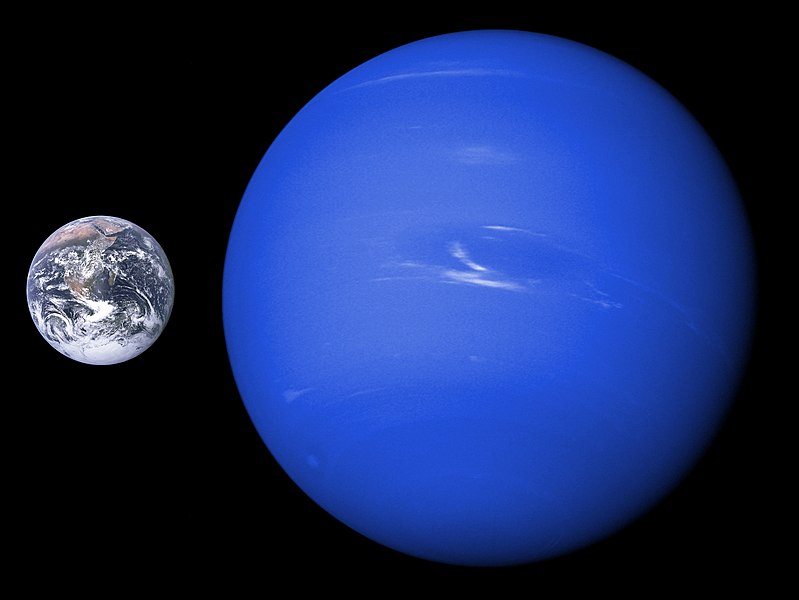Facts About Neptune
Overview
- Neptune is the last planet in our Solar System
- It has at least 5 main rings and 14 known moons orbiting itself
- A day in Neptune is the equivalent of 16 hours on Earth
- Neptune's Magnetic field is 27 times more powerful than Earth's which is why
it swings heavily during each rotation
Size and Distances
- Neptune's diameter is 30598 miles or 49244 kilometres making it roughly 4 times the size of Earth
- It is 2.8 billion miles or 4.5 billion kilometres from the Sun
- Neptune at is closest is 2.7 billion miles or 4.3 billion kilometres from Earth
- It is quite similar in composition and size to Uranus
Composition
- Neptune does not have a solid surface
- As an Ice Giant it is made of a dense fluid of Icy Materials
- This would include water, methane and ammonia above a small, rocky core
- Neptune's Ring System also has clumps of Dust called Arcs
Temperature and Atmosphere
- The average temperature of Neptune -201 degrees celsius
- Like the Gas Giants, Neptune's atmosphere is mostly Hydrogen and Helium
- Neptune is the windiest planet in the Solar System - Three Times that of Jupiter
- Its semi-solid state is the reason we call Neptune an Ice Giant




